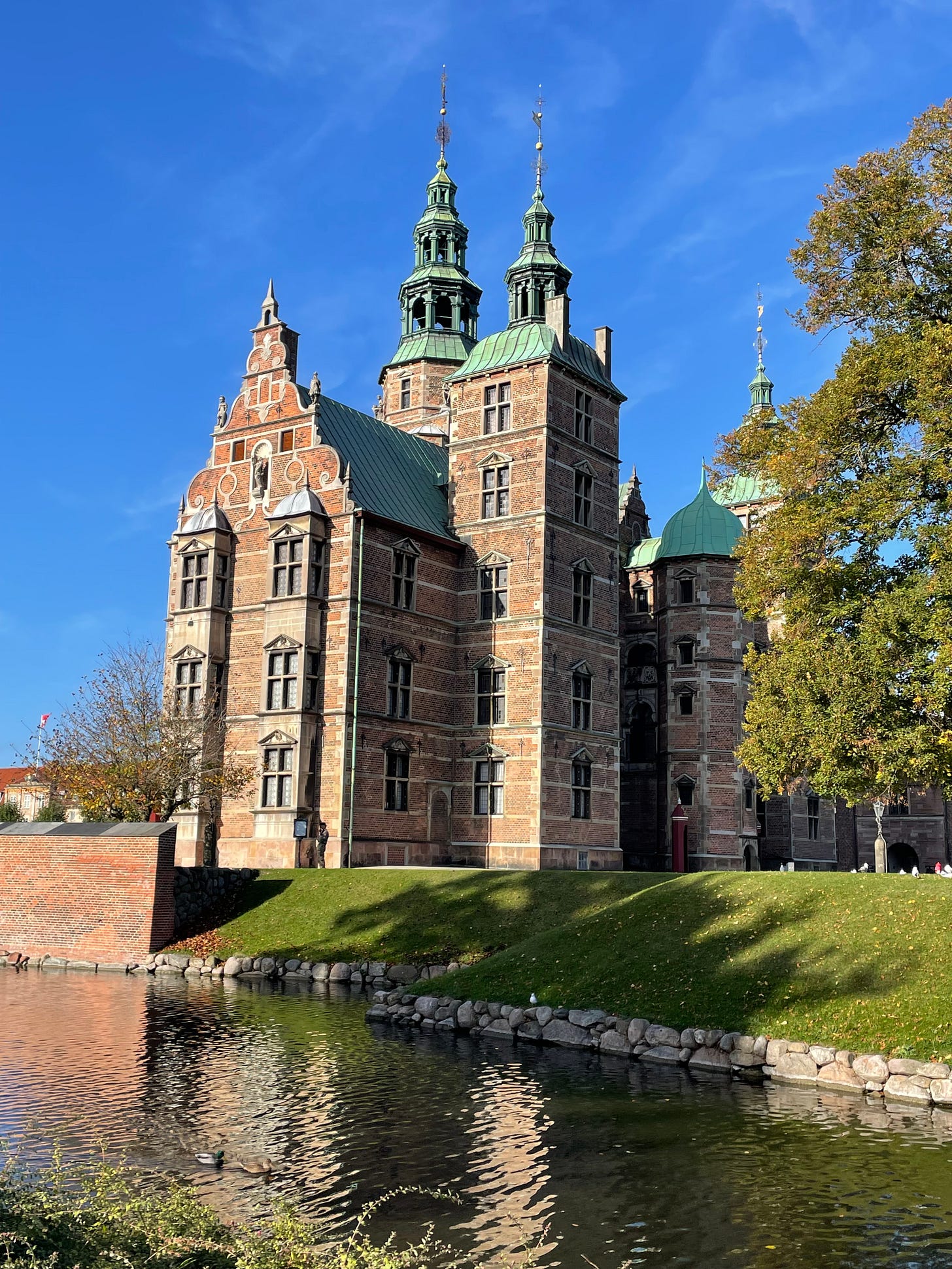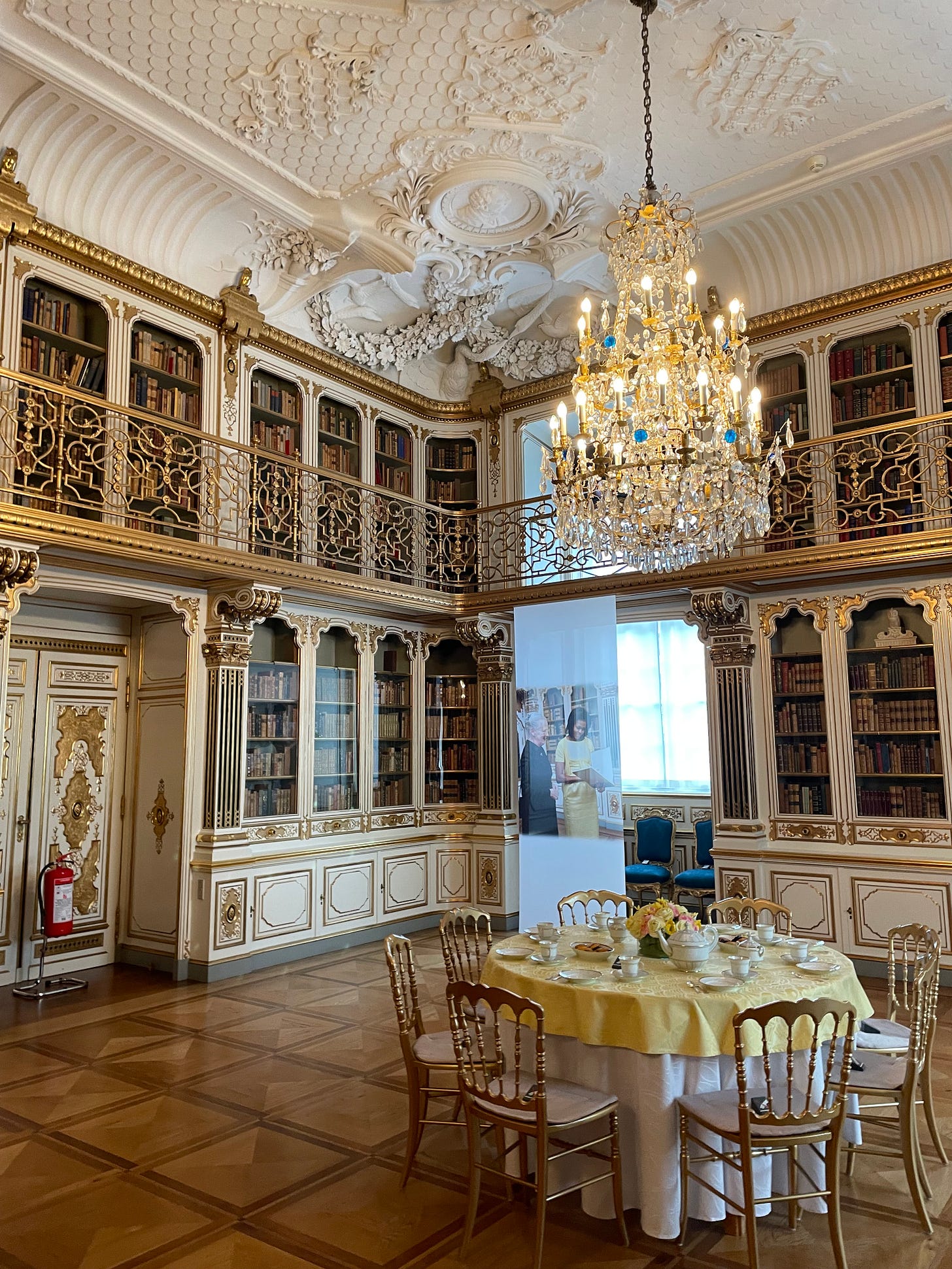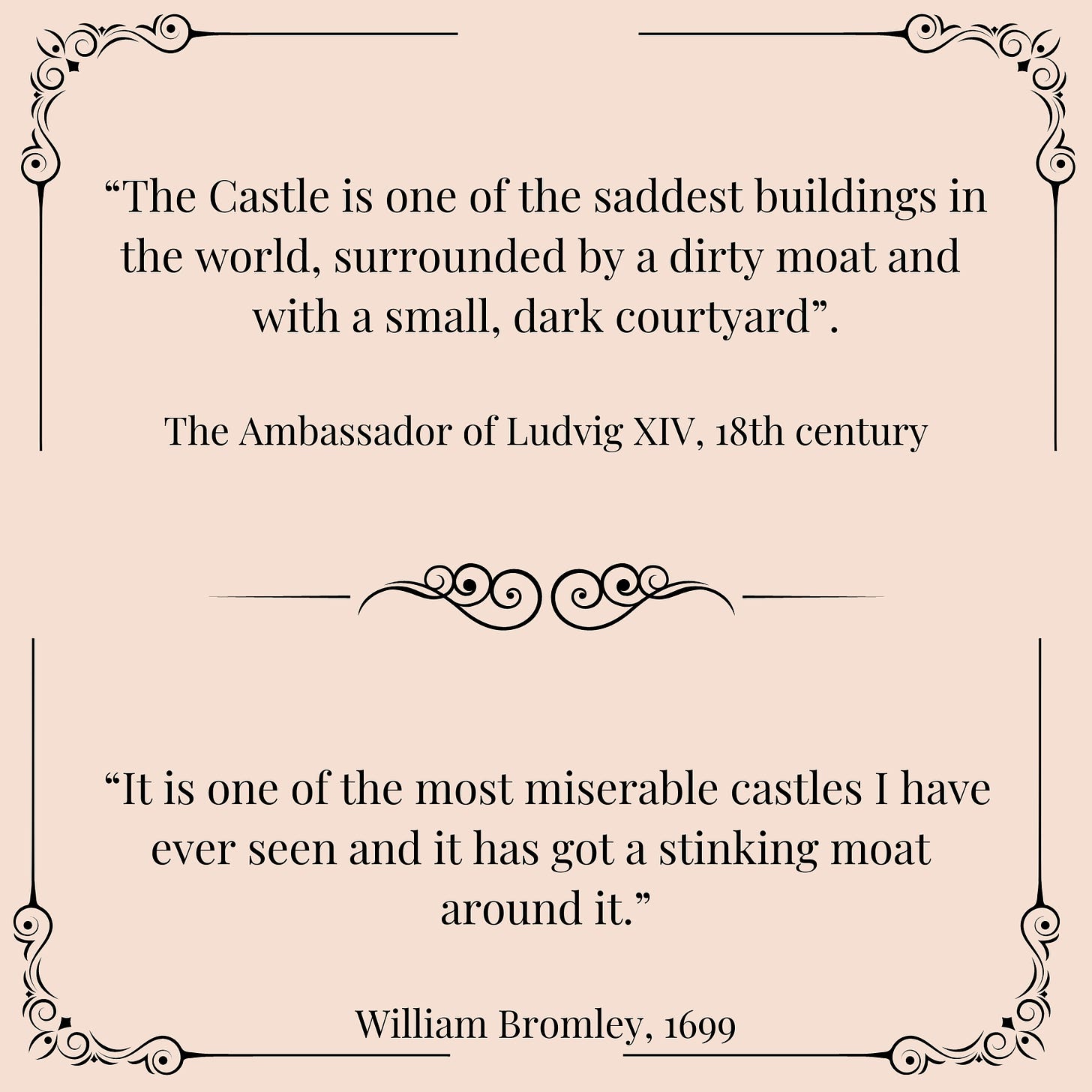Quote of the week
There are no rules of architecture for a castle in the clouds.
Gilbert K. Chesterton
Hello,
Hope you have had a good week. My have been rather quiet which have been nice. I finally continued a project that I started some time ago, as well as fixing a few things at home.
Thinking of the energy bills, like we all are these days, I decided to buy led lamps and change the spot lights in the hall and bathroom. I choose a warmer shine and the lamps do give a softer and warmer glow. Quite pleased with that.
I am thinking of leaving Blogger, where I host my two blogs, and make a web page of my own. I have started creating one at WIX. Blogger is really easy to work with, and I am still trying to get the hang of WIX. It will take some time before I am ready. That is when I have to decide wether to change or not. Anyone using WIX who can give me some advice?
Visting Copenhagen
My friend Lena and I decided to go to Copenhagen for a day to visit museums. There are many interesting museums, and I think it will take several visits before I have seen them all. This time we decided on two castles (what else?); Rosenborg and Christiansborg, both situated in the middle of the city. We boarded the train in Malmö, went over, (or under in this case, since the railway bridge is under the highway) the bridge and stepped out close to the first visit, which was the castle of Rosenborg. We settled for castles this time. Both situated in the middle of the city.
Rosenborg castle
This very personal castle was built by the most famous Danish king, Christian IV (1595-1648), in the 17th century. Today it houses 400 years of Royal collections of furniture, paintings, tapestries and whatever else they used in those days. The tour covers three floors, plus the basement (housing the Crown Jewels which are magnificent), full of wonderful objects highlighting the taste of the time. The first room you enter is the Winter room, full of Dutch paintings although unknown artists, typical of the era. Off this room is the king’s writing room, and I would not say no to his desk (see image below). Since the castle was used as a royal residence until around 1710, the rooms are not only official ones, but also private ones, like bedrooms and bathrooms.
After the reign of Frederik IV (1699-1730), Rosenborg was used only twice by the royal family. Both times during emergencies. First time after Christiansborg Palace burned down in 1794, and another time during the British attack on Copenhagen in 1801. Known as the First Battle of Copenhagen (the second battle came in 1807) was fought when a British fleet defeated a smaller force of the Danish-Norwegian Navy. All due to broken down diplomatic negotiations and British fear that the powerful Danish fleet would ally itself with France.
The second floor houses the Great Hall where you see three silver lions guarding the thrones of the king and queen. On the walls hang 12 tapestries depicting Christian’s V’s victories in the war again Sweden 1675-79. On the same floor is a glass cabinet with Venetian glass which was given to Fredrik IV when he visited the city. Some of the finest glass I have seen. Beautifully displayed, but unfortunately impossible to photograph. The collection is truly amazing.
Having walked around and enjoying the collections on the upper floors we went down to the basement where various items are displayed: weapons, objects of ivory and amber of exquisite quality. At the end you enter another stair case going down to find the treasury with amazing objects of jewellery and regalia. We were told that some of the necklaces displayed are used from time to time, but only by the Queen herself.
We were very pleased and surprised by the collection at Rosenborg. It is quite unique and unlike anything we had seen before. If you visit Copenhagen, I would say it is a must visit. No royal families without scandals, so next week I will tell you about one of them.
Christiansborg Palace
After a nice, light lunch at Café Vivaldi, we continued our castle tour to Christiansborg Palace. Three different palaces have bee built on the site through the years. The oldest one, which ruin you can see under the present day building, was a palace built by the powerful Bishop Absalon in the 12th century. In 1740 Christian VI built the first castle, but it burnt down in 1794. The second one was inaugurated in 1828, but was also destroyed by a fire in 1884.
The castle we see today is the third one and dates from 1928. It was built to accommodate the Royal Family and the two houses of the Danish parliament (the Folketing and the Landsting). However, at the time, Christian X chose not to live there and therefor it has only been used as the working place for the Royal Family, the office of the Danish prime minister and the Danish parliament. The Queen receives foreign dignitaries, or is hosting gala dinners at this place as well as other official functions. In the beautiful library we could see pictures from the tea party when Michel and Barak Obama visited Copenhagen.
Christiansborg is not comparable to Rosenborg. It is not furnished but used for official gatherings. The rooms are magnificent, but have a touch of officialdom. I am sure they will be nicely decorated during the various functions, but it does not have the same intimacy as we saw in Rosenborg’s castle.
A couple of quotes from early visitors to the castle.
The castle does not only have happy memories. There is the Blue Tower which was used as a prison. A special person was locked up there for over 20 years, but that is for next week.
Other musings this week
Books
An interesting book(s) turned up in a cultural program on TV introducing the new book by American political scientist Francis Fukuyama. He became famous with his 1992 book The End of History and the Last Man. He argued that with the end of the Cold War and the collapse of the Soviet Union humanity has reached “not just … the passing of a particular period of post-war history but the end of history as such: That is, the end-point of mankind’s ideological evolution and the universalisation of Western liberal democracy as the final form of human government.”
Well, events lately have unfortunately changed that concept. In his new book, Liberalism and Its Discontents, Fukuyama takes another look at the world of liberalism and its pros and cons.
“From Putin's populism, the Trump administration and autocratic rulers in democracies the world over, it has both thrived and failed under identity politics, authoritarianism, social media and a weakened free press the world over. Since its inception following the post-Reformation wars, liberalism has come under attack from conservatives and progressives alike, and today is dismissed by many as an 'obsolete doctrine'. In this brilliant and concise exposition, Francis Fukuyama sets out the cases for and against its classical premises: observing the rule of law, independence of judges, means over ends, and most of all, tolerance. Pithy, to the point, and ever pertinent, this is political dissection at its very best. “
Should be an interesting book to read, even his first one of course. Below a review I found from the Guardian.
Review:
The Guardian - a defence of liberalism… from a former neocon
Paper book sales declining in the USA
Publishers Weekly tells us that the sale of paper books in the USA decreased by 4,8% during the first nine months (figures from NPD BookScan). Number of books sold was 542,6 millions in comparison with 570 millions jan-sept 2021. The only increase comes from fiction books for adults and young adults. Four books have sold over 1 million books this year; Colleen Hoover has written three of them (well done) and Delia Owens the other one. Must admit I am not familiar with Colleen Hoover. Looking her up, I she writes romance and young fiction. I don’t read much of that kind of fiction, so probably why I am not familiar with her. I have read Delia Owens Where the Crawdads Sing though, and it is a wonderful book.
It does not say if there is a decline in other book sales like audio- and e-books. I guess they were only looking at the paper version. Even I have taken a subscription for Nextory, but only because they also provide e-books (although not for all books). I had to listen to an audio book recently, the only version I could find, for a book club next week. It is not easy to grasp everything, I find. Maybe it is a matter of getting used to. The advantage is that you can listen whenever you do something else. Let’s see if I can come to terms with them in the long run.
All for this week. Hope you find a few good books to read.
Links
I have two blogs;
The Content Reader, (in English) where I write about books
and
Den tillfälliga besökaren (in Swedish) where I share my life and interests in books, history, travel and everything that makes life interesting.
If you want to leave a comment or discuss something you can comment in the post or send me an e-mail to thecontentreadernewsletter(at)gmail.com











